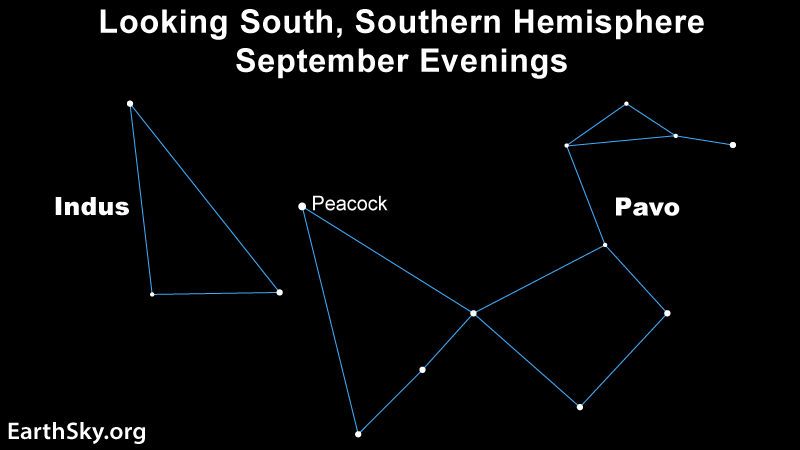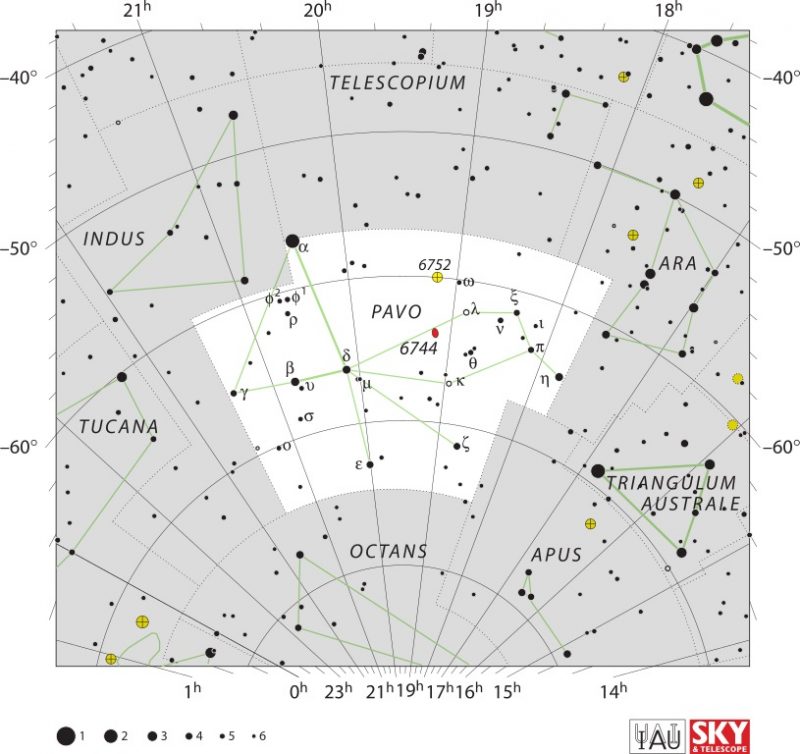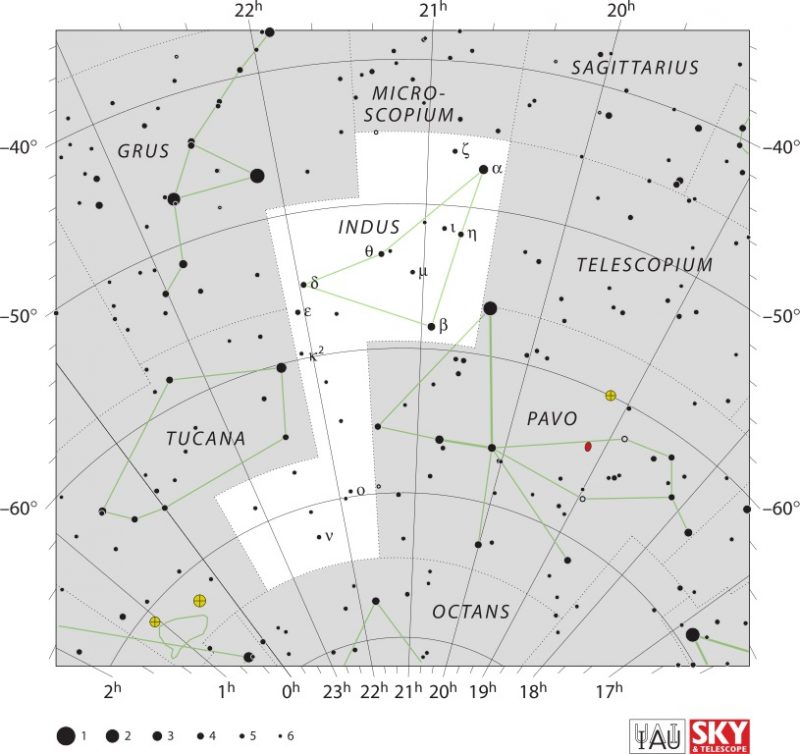
Pavo and Indus
Pavo the Peacock and Indus the Indian are two constellations that lie close together in southern skies. Petrus Plancius came up with these two constellations around the year 1600. Pavo is Latin for peacock and is one of the “southern birds,” along with the constellations Grus, Phoenix and Tucana. And Indus translates to Indian or indigenous person, though it’s not clear exactly which group of people this constellation is meant to represent.
On September evenings, residents of the Southern Hemisphere can find these two constellations high in the southern sky. Then, the other three southern birds follow them up from the horizon.
Pavo the Peacock
Pavo the Peacock lies next to Octans and Indus. The constellation of the Peacock has one bright star and a handful of moderately bright stars. Its brightest star is Alpha Pavonis, or the Peacock. Alpha Pavonis is magnitude 1.94 and lies 183 light-years away. Beta Pavonis is magnitude 3.42 and lies 138 light-years away. Delta Pavonis is 3 1/2 degrees from Beta and shines almost as bright, at magnitude 3.56. Delta Pavonis is only 20 light-years away.
Near the border with the constellation Ara is Eta Pavonis at magnitude 3.61 and 371 light-years distant. Farther south, near the border with Octans, is Epsilon Pavonis at magnitude 3.97 and 106 light-years away.
Pavo contains part of the Milky Way and, therefore, is home to many nebulae. However, most of these are quite dim. One beautiful exception to the many dim deep-sky objects in Pavo is NGC 6752. This globular cluster shines at a bright magnitude 5.4, making it easily reachable with binoculars. NGC 6744 is a decent galactic target for telescopes. This spiral galaxy shines at magnitude 9 from a distance of 30 million light-years. It’s sometimes referred to as the Milky Way’s twin.

Indus the Indian
Indus has no distinctive shape but is generally drawn as a triangle. It has only dim stars and is made up of the dark spaces in between the constellations Tucana, Pavo and Octans.
Indus’s brightest star is magnitude 3.11. The star – Alpha Indi – lies 101 light-years away. Epsilon Indi may not be bright at magnitude 4.8, but it’s the 17th closest star to Earth at a distance of 11.8 light-years away. A couple more fun facts about Epsilon Indi: it has the 3rd-highest proper motion for stars visible to the unaided eye, it’s home to binary brown dwarfs and it’s often been a target of the Search for Extraterrestrial Intelligence (SETI). Plus, in Star Trek, it’s the home of the Andorians and was the base for the evil Gorkon.

Bottom line: Pavo and Indus, the constellations of the Peacock and Indian, respectively, are viewing targets for southern observers in the month of September.
The post Pavo and Indus, the Peacock and the Indian first appeared on EarthSky.
0 Commentaires